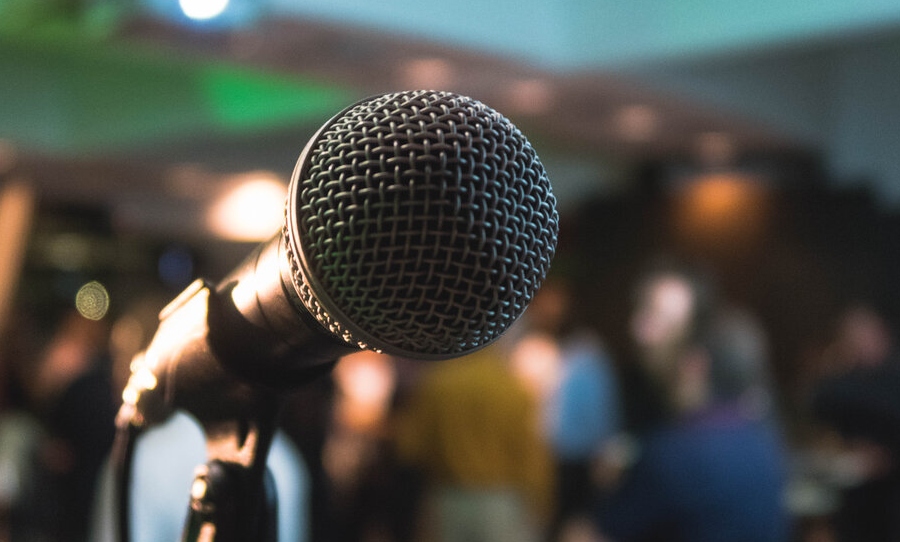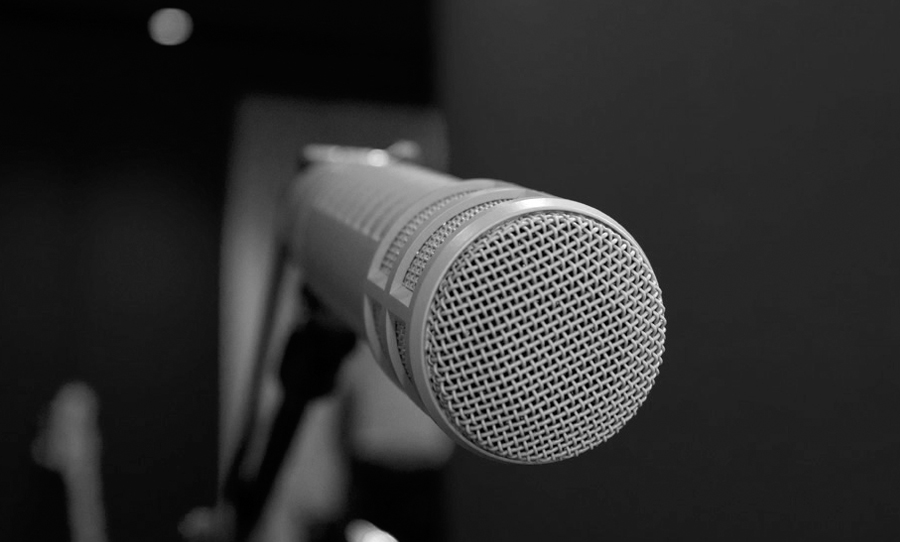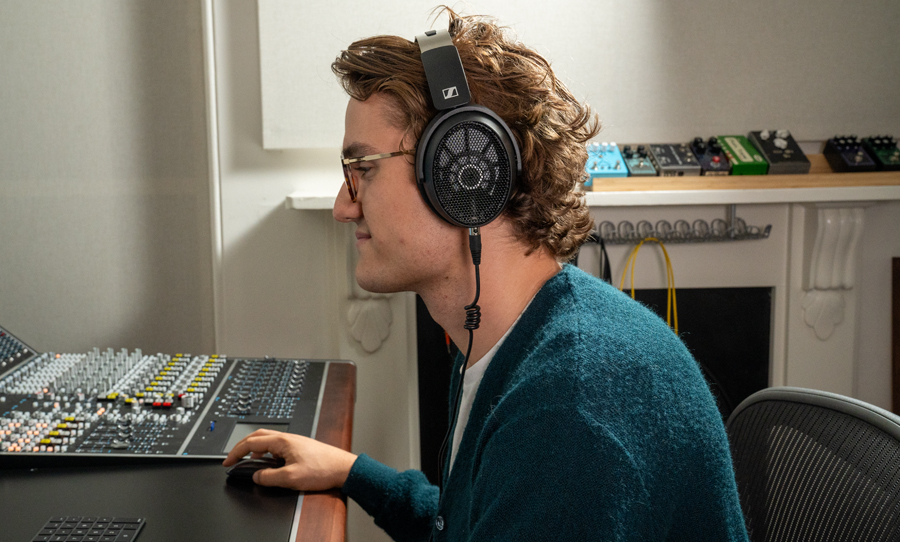Looking to expand your dynamic microphone collection? Here are our 9 top picks for the modern world, in the studio and on stage.
The modern dynamic microphone is a far cry from the experiments of Alexander Graham Bell in the 19th century. The highly competitive race for quality is now bustling with so many options, it can be overwhelming. The reasons to get a dynamic one above other types are plenty. Like their high sound pressure level limit, so better for things like drums. Or for the simple fact that they are generally built to withstand being tossed around a stage, or being hit — by accident of course.
We’ve talked about getting transparency between the studio and stage as well as these types of microphones before. But now we’re going to delve into a fine selection of our favourites, to help you on your journey.

Sennheiser MD421-II
The Sennheiser MD421-II dynamic microphone has seen many an improvement since the first model in the ’60s. Originally, it was made for the German broadcast industry of the time, for the high fidelity reproduction of the human voice. Originally made of metal, now made of high-impact plastic, it’s built to withstand hits from drummers and random drops.
Today’s model features a 5-position bass roll-off and is also a little smaller than past models. It features very defined upper-mid content whilst still retaining the strong low-end response it is known to deliver. A go-to for bass-guitar cabinets, able to deliver monstrous sounds from amps like an SVT Classic into an 8 x 10 with ease. Also great for a full-range and rounded tom sound, as well as sweet vocal reproduction, and even snare top.
Go to Sennheiser for more details.
Beyerdynamic M 88
Beyerdynamic is another classic German manufacturing company, notably producing headphones today. The Beyerdynamic M 88 dynamic microphone was also released in the ’60s as a vocal microphone. It has adapted to be used on kick drums for its exceptional bass response. Phil Collins was known to swear-by one on all his tours in the ’80s and was rumoured to have carried one in his hand luggage between shows.
Now known as a universal all-purpose microphone, it has been used on kick drums, bass guitar cabinets, vocals, and orchestral instruments. An incredibly versatile microphone that has a broad low-end response, rugged construction, and an evenly defined upper-mid content. Check out the video below to see Collins using one at Live Aid in 1985.
More spec’s at Beyerdynamic.
Sennheiser e 904
The Sennheiser e 904 dynamic microphone is a go-to for toms in the live sound field. Built small, with its handy clip-on function makes set-up and changeovers a dream. Having said this, take that clip off and put it on a mic stand, hey presto you’ve got studio mode. Diving in the studio with the e 904 you’ve made the microphone footprint smaller. This can be very handy, especially for drummers, whose instrument can have upwards of 10-20 microphones placed at once.
Being a compact dynamic microphone the e 904 has a fast transient response, so it’s well suited to drums. Built ruggedly, they have a super consistent frequency response compared to others. Because of its flexible positioning and size, its ability to placed safely in all environments make it a no-brainer.
For more info head to Sennheiser.
Shure SM7B
Shure has been known for items like the SM58 and SM57, both are classic dynamic microphones. An alternative is the Shure SM7B, its handling and SPL limits are globally renowned amongst all genres. Becoming a staple in punk/hardcore where a vocalist can handle them in the studio as they do on the stage, to accurately capture their emotion as well as performance.
Marketed as the SM7B vocal microphone, however, it can do more than that. Being used on vocals for its more premium ‘Shure’ sound compared to an SM57 or 58, namely used by Michael Jackson on Thriller. It can also be spotted on guitar cabinets and snare drums, as the demo below will show you. It also features shielding from electrical noise from computer monitors and such. So it’s a great addition to the budding engineer who needs a robust and versatile tool.
Head to Shure for a full rundown.
Electro-Voice RE20
The Electro-Voice or EV RE20 was originally designed for application on the human voice for broadcasting. As we’ve already seen, what starts in broadcast, naturally makes its way into the recording studio. As is the case, the RE20 has been seen on kick drums and even horns for its low-frequency response, as well as its presence.
An excellent choice if you need an all-around vocal microphone. For the engineer who works in speech as well as music recording, it’s a go-to. It also features an internal shock mount and pop filter, and compatible swivel mounts make it a no-fuss and versatile product.
For more info, head to Electro-Voice.
Audix D6
As a more recent entrant to the audio game, Audix came onto the scene with fresh ideas and sounds. In 2002 they released the D6, a multi-purpose low-frequency powerhouse. Its response made it the go-to for heavy music like metal, punk, and hardcore, as it gave you that ‘click’ and ‘punch’ sound you wanted with minimal processing. At a glance, its frequency response looks like a ‘scooped mid’ sound, don’t be fooled it packs enough punch.
Seen on kick drums, and naturally, that makes it a viable contender on bass guitar cabinets. On its own, it’s able to capture both low-end growl as well as mid and upper-mid-bite. When paired with something like a 57 or a 421, you’ve got a formidable combination.
Head to Audix for more.
Sennheiser MD441-U
You’ll find the Sennheiser MD441-U dynamic microphone in top-of-line production spaces, both live and studio. At first glance, you may think “what’s this budget MD421 looking thing” as you pick it up and wave it around. Don’t expect an apology if someone snatches it out of hands after doing that, the MD441-U is a top-shelf dynamic microphone.
It has long been marketed as one of the closest things you will get to a condenser quality sound from a dynamic microphone. It comes with a top-shelf price tag, but anyone who’s heard it in action will tell you it’s worth it. Along with its beautifully clear frequency response, it boasts excellent feedback rejection. Other features include a 5-position bass-cut, ‘brilliance’ treble-boost switch, and integral pop-filter.
A full rundown of details is at Sennheiser.
Shure Beta 57a
Shure spruced up some of their original designs and rehoused them in the Beta series. One of them, the Beta 57a has found a home amongst people wanting the SM57, but with a little bit more. It packs everything you love about the OG 57 sound, but with things like a neodymium magnet, for optimal signal-noise ratio. This is turn with things like ats pneumatic shock mount makes it worth that extra bit of money.
It’s of course, great at tracking guitars, but it’s also got another home amongst the brass and horns. Being a little bit more pleasing in the mids and upper-mids, it can add an extra bit of spice to snares, guitar cabs and vocals both in the studio and on stage. It also features a hardened steel mesh grille, super-cardioid response, and high gain before feedback.
AKG D7 Dynamic Microphone
AKG is best known for its C 414 reference condenser and the C 12 Tube mics. Among its releases in the early 2000s was the AKG D7 dynamic microphone. The D7 is the dynamic option in AKG’s handheld vocal microphone range and an attempt to bundle the sound of a condenser into a dynamic package.
Boasting an open and detailed sound, it is a premium alternative to something like an SM58. It still packs a high-SPL limit like any dynamic microphone should, as well as a built-in high pass filter that is always on. Other features include high-gain-before-feedback, a hum-bucking coil to reduce interference from electronics, and a die-cast chassis.
More info at AKG.



